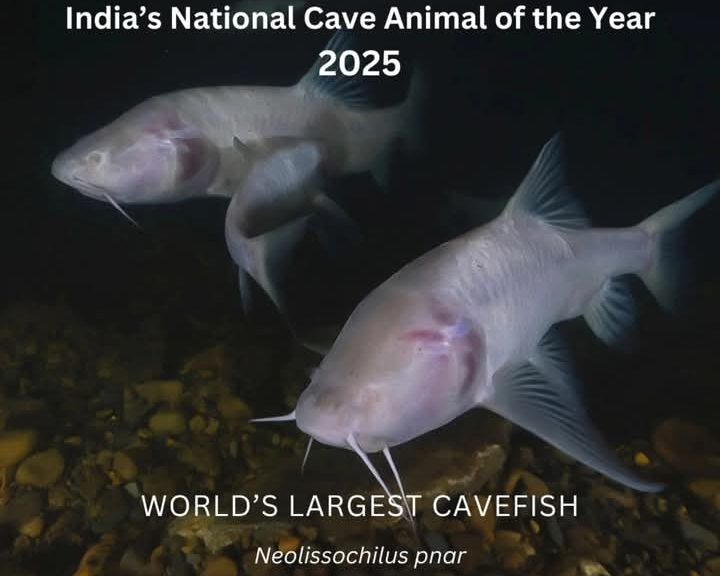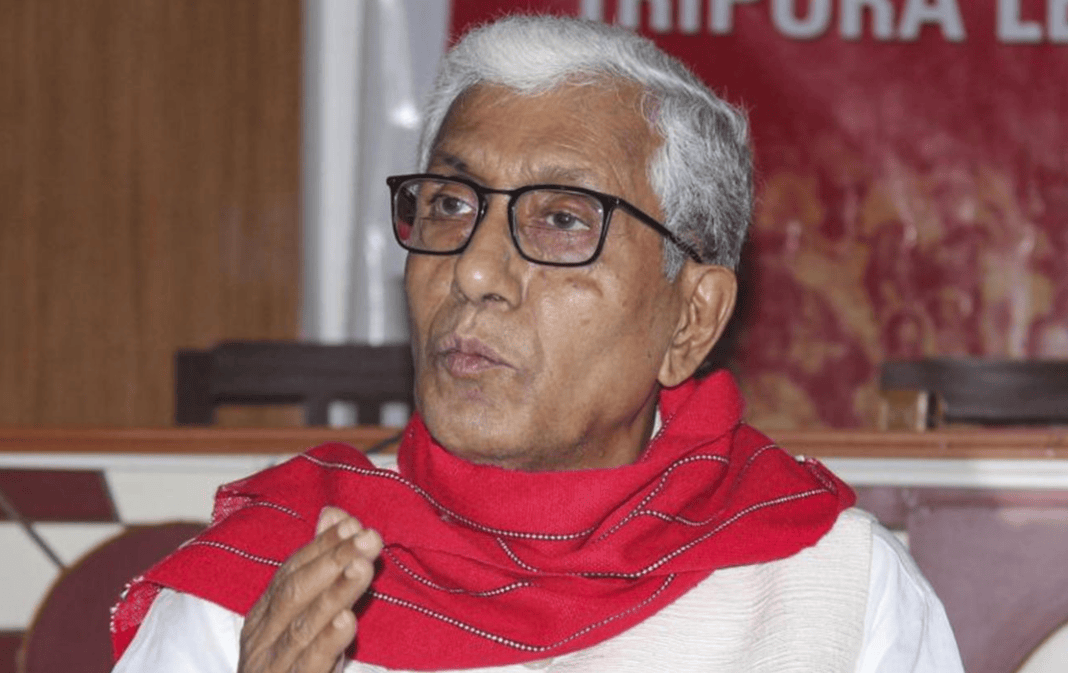Shillong, Jan 3: Meghalaya begins 2025 with remarkable news as Neolissochilus pnar, the world’s largest cavefish, has been named India’s first “National Cave Animal of the Year.”
The Speleological Association of India (SAI), an Indian partner of the International Union of Speleology (UIS), announced the designation as part of its new initiative to spotlight India’s unique subterranean fauna. This annual campaign aims to raise awareness about the ecological importance of cave ecosystems and foster their conservation.
Discovered in the Krem Um Ladaw and Krem Chympe caves in Meghalaya’s East Jaintia Hills in 2019 and 2020, Neolissochilus pnar is named in honor of the Pnar, a sub-tribal group of the Khasi people, recognizing their cultural and ecological connection to the region.
“This remarkable species symbolizes the hidden ecological treasures within our caves,” the SAI stated. “Through this initiative, we seek to underscore the ecological importance of cave-dwelling species and ensure their long-term protection.”
The cavefish, a subterranean species, is characterized by a lack of pigmentation and reduced or absent eyes—adaptations for life in complete darkness. Specimens were collected from the vertical entrance caves of Krem Um Ladaw, which feature rocky floors and pools of standing water, and the horizontal river cave Krem Chympe, known for its deep tunnels and waterfalls.
A collaborative team of scientists described the species, including Neelesh Dahanukar (Shiv Nadar Institution of Eminence), Remya L. Sundar (Kerala University of Fisheries and Ocean Studies), Duwaki Rangad (St. Edmund’s College, Shillong), Graham Proudlove (The Manchester Museum), and Rajeev Raghavan (Kerala University of Fisheries and Ocean Studies). Their findings were published in the journal Vertebrate Zoology.
“The unique characteristics that differentiate N. pnar from other species include highly reduced eye size to complete absence of externally visible eyes and a total lack of pigmentation,” the study notes. The limestone caves of Meghalaya harbor remarkable subterranean biodiversity, making the state one of two hotspots for subterranean fish diversity in India, alongside the lateritic aquifers of Kerala.
The study highlights significant gaps in the understanding of India’s subterranean ecosystems. “Despite the ichthyofaunal richness in aquifers and caves on the Indian subcontinent, there are limited studies addressing their diversity and distribution. Recent discoveries of new species, genera, and even family-level taxa of freshwater fishes from subterranean habitats suggest major knowledge gaps. These habitats are among the most vulnerable to anthropogenic activities, necessitating immediate exploration and conservation efforts,” the authors emphasized.
SAI, a non-profit organization dedicated to cave and karst conservation, hopes to use the “Cave Animal of the Year” campaign to promote scientific exploration and advocacy for India’s subterranean ecosystems, which often go unnoticed despite their critical ecological roles.




